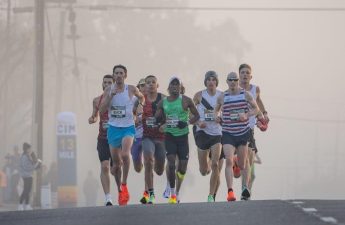Reverse Total Shoulder Replacement Exercises⁚ A Comprehensive Guide
This guide provides a structured approach to exercises following reverse total shoulder arthroplasty (RTSA), encompassing pre- and post-operative regimens. It details crucial phases of rehabilitation, from initial pendulum exercises to advanced strengthening, emphasizing safety and the importance of physical therapy. The information presented here is for educational purposes only and should not replace professional medical advice.
Understanding Reverse Total Shoulder Arthroplasty (RTSA)
Reverse total shoulder arthroplasty (RTSA) is a surgical procedure used to treat severe shoulder arthritis and irreparable rotator cuff tears. Unlike a conventional total shoulder replacement, where the ball component is placed on the humeral head, RTSA reverses the components. The ball is placed on the glenoid (shoulder socket), and the socket is placed on the humeral head. This design is particularly beneficial for patients with compromised rotator cuff muscles because it allows for improved stability and range of motion even without functioning rotator cuff tendons. The surgery involves resurfacing the damaged parts of the shoulder joint with artificial components. Careful preoperative planning and assessment are crucial to determine the suitability of RTSA for a specific patient. Post-operative rehabilitation is critical for successful recovery and achieving optimal functional outcomes. The specific exercises and recovery timeline will be determined by the surgeon based on individual patient needs and the complexity of the surgery. Understanding the mechanics of RTSA and the goals of rehabilitation are essential for patients to actively participate in their recovery process.
Preoperative Exercise and Rehabilitation
Preoperative exercise plays a vital role in optimizing outcomes following reverse total shoulder arthroplasty (RTSA). A structured program, often guided by a physical therapist, focuses on improving range of motion and strengthening the muscles surrounding the shoulder joint. This preparation helps minimize post-operative pain and stiffness and facilitates a faster recovery. Exercises typically include gentle range-of-motion exercises to maintain flexibility, as well as strengthening exercises for the rotator cuff muscles (if functional), deltoids, and biceps. The emphasis is on controlled movements to avoid stressing the damaged joint. The specific exercises and intensity will be tailored to the individual patient’s condition and physical capabilities, always respecting any limitations caused by the existing arthritis or rotator cuff tear. The goal of preoperative rehabilitation is to improve overall shoulder function and to condition the muscles surrounding the shoulder, to prepare the patient for the demands of post-operative recovery, leading to a smoother transition and improved long-term results. Compliance with the prescribed program is crucial for maximizing the benefits of this pre-surgical intervention.
Post-Operative Exercise Regimen⁚ The First 6 Weeks
The initial six weeks post-reverse total shoulder arthroplasty (RTSA) are critical for healing and initiating the rehabilitation process. The focus during this period is on pain management, gentle range of motion, and preventing stiffness. The surgeon’s specific instructions must be followed meticulously. Early mobilization is usually encouraged, starting with simple pendulum exercises to gently move the shoulder without stressing the joint. Pain medication should be used as prescribed to manage discomfort. Active assisted range-of-motion exercises, where the patient uses their unaffected arm to support the movement of the surgical arm, may be introduced gradually. The exercises should be performed within pain-free limits and should never cause significant discomfort. During these initial weeks, the primary objective is to regain some passive range of motion and to reduce post-operative swelling. The therapist may use modalities like heat or ice to aid in pain management and reduce inflammation. Regular check-ups with the surgical team are essential to monitor progress and make adjustments to the exercise plan as needed. Progress will vary depending on the individual’s condition and healing response. Patience and consistency are key during this early phase of recovery.
Pendulum Exercises⁚ A Crucial First Step
Pendulum exercises represent a foundational element in the early post-operative rehabilitation following reverse total shoulder arthroplasty (RTSA). These gentle, gravity-assisted movements are typically initiated soon after surgery, often within the first few days, as tolerated. The patient leans forward, supporting their unaffected arm on a table or sturdy surface, allowing the affected arm to hang freely. Small, pendulum-like swings are then performed, gradually increasing the range of motion as tolerated. Forward and backward swings are usually performed first, followed by side-to-side movements. Circular motions can be incorporated later, once comfort allows. The key is to perform these exercises smoothly and within a pain-free range. Pushing through pain can hinder healing and lead to complications. The duration and frequency of pendulum exercises are determined by the surgeon and physical therapist based on the patient’s progress. These exercises help to maintain blood flow, reduce stiffness, and promote gentle movement in the shoulder joint without putting excessive strain on the newly implanted components. They are a crucial stepping stone towards more advanced range-of-motion and strengthening exercises in subsequent phases of rehabilitation. Proper technique is vital to ensure efficacy and avoid potential injury.
Early Range of Motion Exercises
As healing progresses, early range-of-motion (ROM) exercises are carefully introduced to gradually increase the shoulder’s flexibility. These exercises build upon the foundation established by pendulum exercises, progressing towards more active movements. The therapist guides the patient through assisted ROM exercises, gently moving the shoulder joint through its available range. Initially, this might involve passive movements where the therapist performs the movements, gradually transitioning to active-assisted ROM, where the patient participates actively but with support. Active range of motion exercises, where the patient independently moves the shoulder, are introduced cautiously as strength improves. Examples of these exercises include gentle flexion (lifting the arm forward), abduction (lifting the arm to the side), and external rotation (turning the arm outward). The focus remains on pain-free movement, avoiding any force or strain that could compromise the surgical site. The intensity and duration of these exercises are carefully tailored to the individual’s healing process. Regular monitoring by the physical therapist ensures that the exercises are safe and beneficial, preventing overexertion and promoting optimal recovery. Consistency is key to achieving a functional range of motion. Patients should diligently adhere to the prescribed exercise schedule and communicate any discomfort or limitations to their healthcare provider.
Strengthening Exercises⁚ Phase I
Phase I strengthening exercises commence after sufficient ROM is achieved and the surgical site demonstrates adequate healing. The focus shifts from simply moving the joint to building strength and stability. Exercises are initiated with low weights or resistance to avoid excessive strain. Isometric exercises, which involve muscle contractions without joint movement, are often introduced first. These can include holding the arm in various positions against resistance, such as pushing against a wall or using a resistance band. Simple, low-weight exercises using light dumbbells or resistance bands are then gradually incorporated. These exercises target the muscles surrounding the shoulder, including the deltoids, biceps, and rotator cuff muscles. Examples include seated rows with light resistance, gentle bicep curls, and external rotation exercises using light weights or resistance bands. The repetitions and sets are kept low initially, progressing incrementally as strength improves. Proper form is crucial to avoid injury and maximize effectiveness. The therapist provides personalized guidance, ensuring correct posture and movement patterns. Pain management strategies are integrated as necessary. Regular monitoring and adjustments to the exercise plan are made based on the patient’s progress and tolerance. Phase I exercises lay the groundwork for more challenging exercises in subsequent phases, ultimately restoring strength and function to the shoulder.
Strengthening Exercises⁚ Phase II
Phase II builds upon the foundation established in Phase I, progressing to more challenging exercises that increase strength and endurance. As the shoulder gains strength and stability, resistance levels are gradually increased. This phase introduces exercises that involve more dynamic movements, targeting a broader range of muscles. Examples might include standing rows with increased resistance, overhead presses with lighter weights, and lateral raises. The use of resistance bands continues, but with higher tension levels. Free weights are gradually incorporated, starting with lighter weights and slowly progressing to heavier ones as tolerated. The number of repetitions and sets increases, gradually building muscular endurance. Exercises are performed with a focus on controlled movements to maintain proper form and prevent injury. The therapist continues to provide guidance, monitoring progress and making adjustments as needed. Proprioceptive exercises, which focus on improving balance and coordination, may be incorporated to enhance functional mobility. These exercises might involve standing on one leg while performing shoulder exercises or performing exercises on unstable surfaces. The goal is to increase the intensity and complexity of exercises to prepare the patient for activities of daily living and a return to desired physical activities. Regular assessment of pain levels remains crucial; pain management strategies may continue to be utilized as needed.
Advanced Strengthening Exercises
Once significant strength and stability have been achieved in Phase II, the focus shifts to advanced strengthening exercises designed to further enhance muscle power and functional capacity. This phase often incorporates more complex movements and higher resistance levels. Exercises may include heavier weight training, plyometric exercises (such as medicine ball throws), and functional movements that mimic everyday activities. For example, patients might progress to performing push-ups against a wall or bench, gradually increasing the difficulty by lowering the incline. Resistance band exercises become more challenging, utilizing heavier bands or more demanding exercises. Free weight exercises continue to progress, with an increased focus on compound movements that work multiple muscle groups simultaneously. The goal is to build explosive strength and power, enabling the patient to perform activities requiring significant upper body strength. Throughout this phase, proper form and technique are paramount to prevent injury. The therapist provides close supervision and guidance, modifying exercises as needed to meet individual patient needs and ensure safety. The program may also incorporate activities that improve coordination, balance, and agility, preparing the patient for a return to more vigorous physical activities, such as sports or strenuous hobbies. Progress is continuously monitored, and adjustments are made to the exercise program based on the patient’s response and the achievement of functional goals.
Maintaining Mobility⁚ Hand, Wrist, and Elbow Exercises
While the focus of rehabilitation after reverse total shoulder arthroplasty (RTSA) is on the shoulder joint, maintaining mobility in the hand, wrist, and elbow is crucial for overall upper extremity function. Stiffness and reduced range of motion in these areas can significantly impact daily activities, such as dressing, eating, and personal hygiene. Therefore, a comprehensive rehabilitation program incorporates specific exercises to address these areas. These exercises typically involve range-of-motion activities, such as finger stretches, wrist flexion and extension, and forearm rotations. The use of putty or therapy putty can be beneficial for strengthening the intrinsic muscles of the hand and improving dexterity. Wrist curls and extensions, using light weights or resistance bands, can enhance wrist strength. Elbow exercises may include flexion and extension movements, again employing light weights or resistance bands. These exercises are typically performed multiple times a day, with repetitions and sets determined by the patient’s tolerance and the therapist’s guidance. The goal is to maintain or improve range of motion and strength in these joints, thereby preventing stiffness and facilitating the return to functional independence. Regular performance of these exercises, in conjunction with the shoulder rehabilitation program, promotes a more complete and effective recovery process, restoring overall upper limb function.
Addressing Pain During Exercises
Experiencing pain during post-operative exercises after reverse total shoulder arthroplasty (RTSA) is common, but it’s crucial to manage it effectively to prevent setbacks in the rehabilitation process. Pain management strategies should be discussed with your surgeon or physical therapist to ensure they align with your specific situation and recovery plan. Pain medication, prescribed by your doctor, can be taken before or after exercise sessions as needed. It’s important to adhere to the prescribed dosage and timing to avoid potential side effects. Ice packs applied to the shoulder area can help reduce inflammation and alleviate pain, particularly after exercise. Remember to protect your skin by wrapping the ice pack in a thin towel. The duration and frequency of ice application should be guided by your therapist’s recommendations. Modifying exercise intensity is another effective pain management technique. If an exercise causes significant discomfort, reduce the range of motion, the number of repetitions, or the resistance used. Listen to your body and avoid pushing through severe pain, as this could lead to injury. Regular communication with your healthcare team is vital. Report any persistent or worsening pain to allow adjustments to the exercise program or pain management plan. Remember, mild discomfort is often expected, but severe or persistent pain requires attention to ensure a safe and successful recovery.
The Importance of Physical Therapy
Post-operative physical therapy is paramount for successful recovery after reverse total shoulder arthroplasty (RTSA). A skilled physical therapist will create a customized rehabilitation program tailored to your individual needs and progress. This program will guide you through a structured series of exercises designed to restore range of motion, strength, and overall shoulder function. They provide personalized instruction, ensuring proper form and technique to maximize results and minimize the risk of injury or complications. Regular monitoring by the therapist allows for timely adjustments to the exercise regimen, addressing any challenges or setbacks promptly. They can identify potential issues early on, preventing further complications and optimizing recovery timelines. Beyond the prescribed exercises, physical therapists offer valuable guidance on daily activities and lifestyle modifications to support healing. They teach strategies for managing pain and swelling, promoting proper posture, and adapting daily routines to protect your shoulder. The therapist’s expertise extends beyond the physical; they address psychological aspects of recovery, offering support and motivation to maintain adherence to the rehabilitation program, ensuring a successful return to your normal activities. This holistic approach is crucial for achieving optimal long-term outcomes after RTSA. Regular communication with your physical therapist is key to a positive rehabilitation experience.
Home Exercise Program
Once you’ve established a foundation of exercises with your physical therapist, a home exercise program becomes crucial for continued progress. This program will build upon the exercises learned in therapy, allowing you to maintain and improve your shoulder’s range of motion and strength independently. The home program should closely mirror the exercises performed in the clinic, ensuring consistency and preventing setbacks. Remember to follow the therapist’s instructions precisely, paying close attention to the recommended repetitions, sets, and rest periods. It is vital to maintain proper form throughout each exercise to prevent strain and potential injury. A daily schedule should be established, allocating specific times for your exercises to promote consistency. This routine should be integrated into your daily life as seamlessly as possible. Regular self-monitoring is equally important. Pay attention to your body’s signals. If you experience any sharp or unusual pain, cease the exercise immediately and consult your physical therapist or surgeon. Consistency is key; missing sessions will hinder your progress. Maintain a journal to track your exercises, noting any changes in pain levels, range of motion, or strength. This information provides valuable feedback to your therapist during your follow-up appointments. Remember, a home exercise program is a crucial component of your ongoing rehabilitation. With diligence and commitment, you can significantly enhance your recovery and maximize the benefits of your reverse total shoulder replacement.
Safety Precautions and Considerations
Prioritizing safety during your reverse total shoulder replacement recovery is paramount. Begin all exercises slowly and gradually increase intensity as tolerated. Never push through pain; discomfort is a signal to stop and reassess your technique or the intensity level. Maintain proper posture throughout each exercise to minimize strain on your shoulder and back. Use a mirror to monitor your form, ensuring that you’re performing the movements correctly. If you’re unsure about any aspect of an exercise, consult your physical therapist or surgeon for clarification. Listen to your body; rest is crucial for recovery. Don’t attempt to do too much too soon. Progressive overload is key, gradually increasing the difficulty of your exercises as your strength improves. Avoid jerky or sudden movements; perform each exercise in a controlled and deliberate manner. Always use proper equipment; ensure that any assistive devices are in good working order. Maintain good hydration and nutrition, as both are essential for healing and recovery. Keep your living environment safe; remove any obstacles that could cause you to trip or fall. Consider using assistive devices as needed to aid in daily tasks, especially during the early stages of recovery. Report any unusual symptoms or concerns to your healthcare provider immediately. Regular follow-up appointments with your physical therapist are essential for monitoring your progress and addressing any issues that may arise. Remember, safety should always be your top priority throughout your rehabilitation journey.


